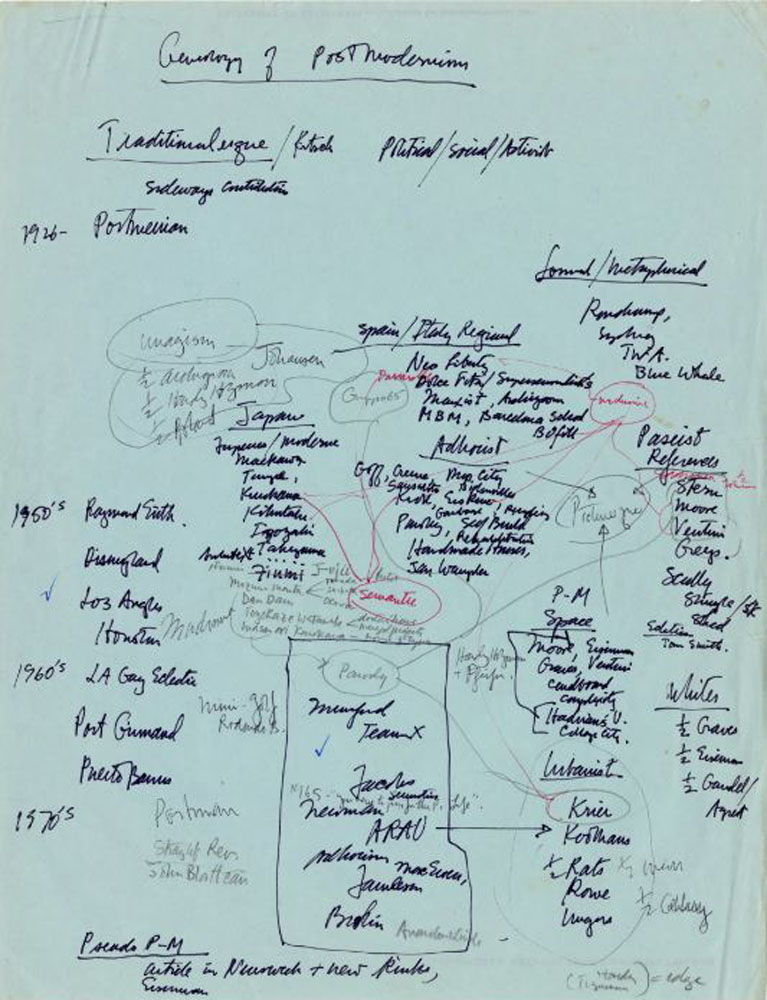Objetos e historias
La doble codificación de las nuevas formas de comunicación en arquitectura
DOI:
https://doi.org/10.30827/sobre.v9i1.28260Palabras clave:
doble-código, objeto arquitectónico, comunicación, narrativa profesionalResumen
En 1977, Charles Jencks desarrolla el concepto de doble código con el que señala la necesidad de que la forma arquitectónica se desdoble para poder ser percibida por un núcleo especializado, los propios arquitectos y arquitectas, y el público general. El problema que el teórico estadounidense aborda es el de la comunicación o, por ser más precisos, el de cómo la arquitectura se comunica. Sin embargo, este proceso comunicativo es objetual: es el propio elemento construido el que establece un canal de diálogo con la sociedad, principalmente a través de lo visual. De su condición de objeto y, en parte, fetiche. El presente texto analiza la preeminencia histórica del objeto arquitectónico como elemento a comunicar y el cambio que, a través de la evolución de la disciplina y de los medios de comunicación, se ha producido tanto en el fondo como en la forma. A través de este cambio se aprecia la necesidad de, precisamente, una nueva doble codificación en la que lo objetual incluya lo narrativo —las historias vitales asociadas a la arquitectura— y establezca una conexión empática, tanto con los y las profesionales como con la sociedad.
Descargas
Citas
Aureli, P. V. (2016). History, Architecture and Labour: A Program for Research. En Cayer, A., Deamer, P., Korsh, S., Peterson, E., and Shvartzberg, M. (Eds), Asymmetric Labors: The Economy of Architecture in Theory and Practice. The Architecture Lobby.
Jencks, C. (1978). The language of post-modern architecture (Revised and enlarged edition). Academy Editions. Lacaton & Vassal, Lacaton, A., Vassal, J.-P., & Museo Colecciones ICO (Eds.). (2021). Lacaton & Vassal: Espacio libre, transformación, habitar. Puente Editores.
Martín de Blas, J. M. (Director). (2002). Elogio de la luz. Radio Televisión Española.
Pérez Guerrero, A. M. (2011). Estrategias narrativas orientadas a la construcción de niveles de lectura en el cine de animación de Pixar (1995-2010). Universidad Rey Juan Carlos.
Szacka, L.-C. (2022). Writing ‘from the Battlefield’: Charles Jencks and The Language of Post-Modern Architecture. Jencks Foundation.
Williams, A. (2019). My Gothic Dissertation (Tesis Doctoral). University of Iowa.

Descargas
Publicado
Cómo citar
Número
Sección
Licencia
Derechos de autor 2023 José María Echarte Ramos

Esta obra está bajo una licencia internacional Creative Commons Atribución-NoComercial-CompartirIgual 4.0.
Aquellos autores/as que tengan publicaciones con esta revista, aceptan y certifican los términos siguientes:
· Que ha contribuido directamente al contenido intelectual del trabajo, del cual se hace responsable a todos los efectos.
· Que aprueba los contenidos del manuscrito que se somete al proceso editorial de Revista SOBRE, y por tanto está de acuerdo en que su nombre figure como autor.
· Que el contenido del artículo no ha sido publicado y que tampoco figura en otro trabajo que esté a punto de publicarse.
· Que se compromete a no someterlo a consideración de otra publicación mientras esté en proceso de dictamen en Revista SOBRE, ni posteriormente en caso de ser aceptado para su publicación.
· Que no ha tenido ni tiene, relaciones personales o financieras que puedan introducir prejuicios y sesgos en el desarrollo o los resultados del presente trabajo.
· Que han sido mencionadas en el epígrafe de agradecimientos todas aquellas personas que, habiendo otorgado su permiso para tal mención, han contribuido de manera sustancial al desarrollo del trabajo.
· Que se compromete a facilitar, cuando así lo requiera la revista, el acceso a todos los datos y fuentes en los que se funda el trabajo presentado.
· Que participará activamente en la realización de todas aquellas modificaciones de estilo u ortotipográficas que sean necesarias para la publicación del trabajo cuando así se lo notifique el equipo editorial de la revista.
· Que no ha violado, ni violará, las leyes y derechos humanos o animales durante el proceso de investigación y publicación de este trabajo.
· Que ninguna de las instituciones en las que desarrolla su labor científica e investigadora ha presentado objeciones con respecto a la publicación del manuscrito que se somete a evaluación.
· Que todos los datos y las referencias a materiales ya publicados están debidamente identificados con su respectivo crédito e incluidos en las notas bibliográficas y en las citas que se destacan como tal y, en los casos que así lo requieran, cuenta con las debidas autorizaciones de quienes poseen los derechos patrimoniales.
· Que los materiales están libres de derecho de autor y se hace responsable de cualquier litigio o reclamación relacionada con derechos de propiedad intelectual, exonerando de responsabilidad a Revista SOBRE.
· Que en caso de que el trabajo sea aprobado para su publicación, autoriza de manera ilimitada en el tiempo a la entidad editora para que incluya dicho texto en Revista SOBRE y pueda reproducirlo, editarlo, distribuirlo, exhibirlo y comunicarlo en el país y en el extranjero por medios impresos, electrónicos, CD, Internet o cualquier otro medio conocido o por conocer.









